The Wrack
The Wrack is the Wells Reserve blog, our collective logbook on the web.
The Wrack is the Wells Reserve blog, our collective logbook on the web.
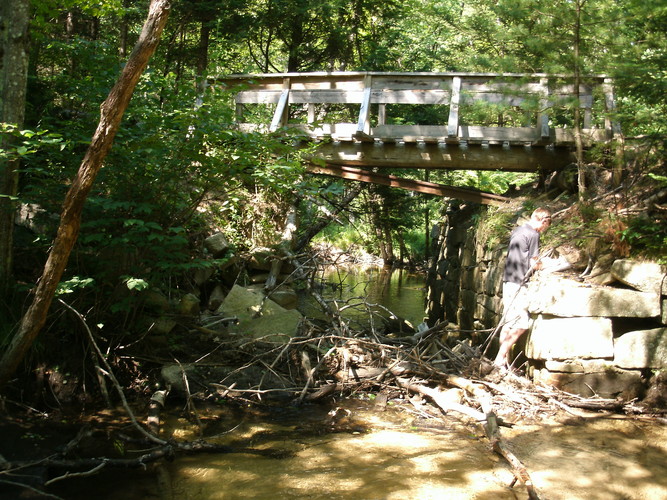 This summer, in our fifth year working with our partners to improve aquatic habitats in Branch Brook, we took on a Herculean task: Remove a four-foot-long wall of large granite blocks, trapped sticks, and sediment from the brook, restoring access to a seven-mile network of stream habitat for native brook trout and a host of other aquatic organisms.
This summer, in our fifth year working with our partners to improve aquatic habitats in Branch Brook, we took on a Herculean task: Remove a four-foot-long wall of large granite blocks, trapped sticks, and sediment from the brook, restoring access to a seven-mile network of stream habitat for native brook trout and a host of other aquatic organisms.
Erosion had caused stones from old bridge abutments to fall into the brook, creating a barrier and raising the upstream water level by several feet. But getting heavy equipment to the site was impractical. How would we maneuver the massive chunks of granite?
We contacted Steve Koenig at Project SHARE, a stream restoration expert who works in Atlantic salmon rivers in downeast Maine. Steve often uses manual techniques to remove stream barriers in remote locations where heavy equipment isn't able to go. He agreed to take on the project and use it as a training opportunity. By the time our work day arrived, over 20 people from nine conservation organizations were on hand to learn and help.
The work was slow but steady. We removed one large stone block at a time using a powerful manual winch and a high line to hoist the rocks just enough to allow gravity to slide them down a steel cable to their destination on the stream bank. The primary goal was safety and great care was taken moving the heavy blocks. By the end of day one, most of the blocks and debris had been removed and the upstream impoundment was draining down.
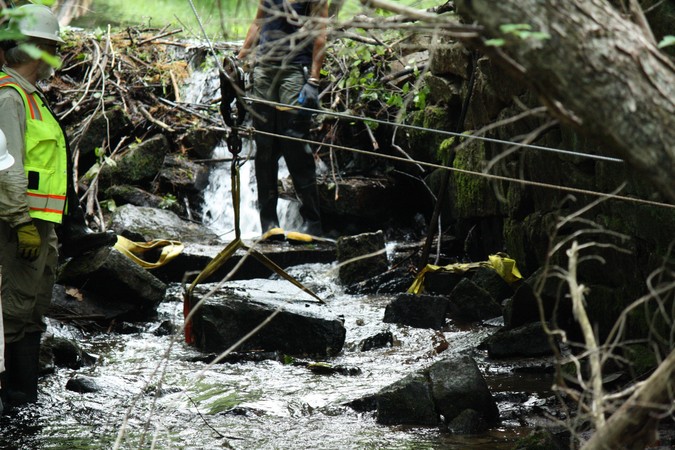
Work continued on day two with the removal of the final blocks and remaining debris, followed by the opening of the channel. It was really exciting to see the progress that had been made and to know that resident brook trout and other aquatic animals could pass upstream and downstream freely for the first time in decades.
After we had admired our work for a little while and caught our breath, we wandered upstream to explore the newly exposed silt along the stream banks. We were surprised to find hundreds of juvenile sea lamprey wriggling around in the mud trying to find their way back to the rapidly narrowing stream. We gathered up as many as we could and put them in the water so that they could find another place to burrow into the stream bed until they become ready to migrate to the ocean. This finding really underscored the importance of work we had completed in 2013 to restore upstream passage past the dam at the Kennebunk, Kennebunkport, and Wells Water District (KKWWD) filtration plant, where we have since been finding adult sea lamprey migrating upstream to spawn. These young lamprey were evidence that our efforts have had a positive effect.
It took only two days to pull out the stream barrier, but over a year of planning and fund raising to make the project possible. Our partnership with KKWWD was vital to our success. We were also very fortunate to have other dedicated partners facilitating this restoration effort. Funding, technical support, and hands-on participation were provided by The Nature Conservancy, U.S. Fish and Wildlife Service Gulf of Maine Coastal Program, and the Atlantic Salmon Federation, all of which do stream restoration throughout the state. Additional funding was provided by the National Fish and Wildlife Foundation.
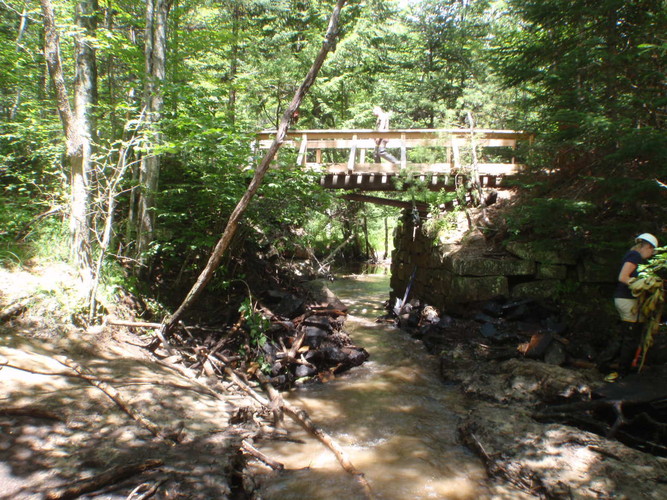
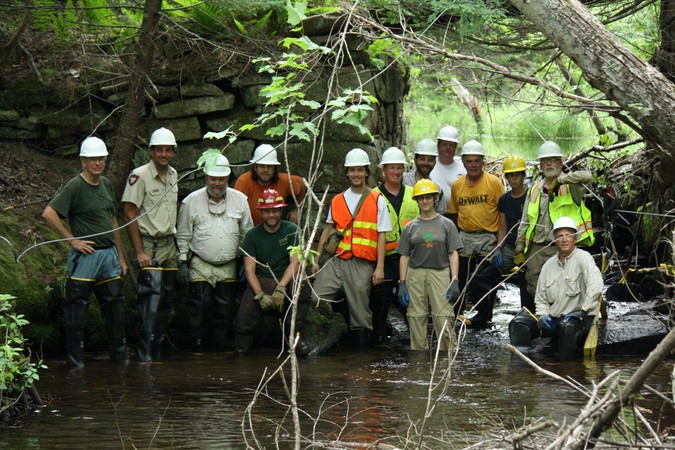
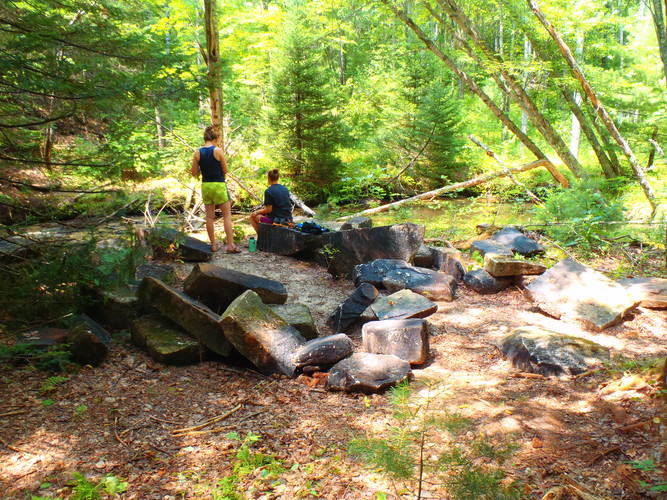
In 2011 the Wells Reserve began a partnership with the KKWWD to improve habitat connectivity in Branch Brook. As the public water utility for thousands of local residents, the water district has a major stake in preserving the quality of Branch Brook, the source of much of that drinking water. The reserve also has a major stake in preserving the quality of the brook, because it flows into the Little River estuary. A partnership was only natural.
In 2012 we did an inventory of stream barriers located at road and trail crossings in the watershed. These barriers disconnect upstream and downstream habitat by preventing the movement of aquatic species.
In 2013 we completed repairs and upgrades to a fish ladder at the KKWWD filtration plant. This removed a major obstacle for migrating fish, while maintaining the district's ability to operate its plant. Since then, we have been monitoring fish that successfully ascend the ladder to make their way upstream.
View all posts about Branch Brook.